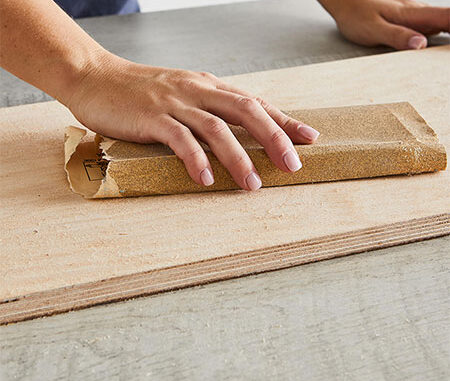
When people think of plywood, the first image that often comes to mind is a construction material used for flooring or walls, rather than something that could serve as the base for beautiful furniture or stylish home decor. It’s no secret that plywood has often been considered less glamorous than solid wood. But here’s the truth — learning how to make plywood look good can truly transform the material, making it an attractive option for a variety of projects. With the right techniques, you can take this versatile material and elevate its appearance, turning it into a centerpiece of beauty, functionality, and design.
In this guide, we’ll delve into practical tips on how to improve the appearance of plywood, making it not only more visually appealing but also suited for high-end DIY and construction projects. By applying a few simple techniques, you’ll soon see that plywood can easily stand out, becoming a statement piece in your home or workshop.
Why Plywood Sometimes Gets a Bad Reputation
Plywood’s reputation often stems from its association with more industrial and utilitarian applications. It’s frequently used for structural purposes where the aesthetic qualities are secondary to its durability and strength. Think of it as the “background player” in most projects — helping things stand firm and function properly but rarely standing out in terms of looks. However, when you take a closer look, plywood has much more potential than it is often given credit for.
The trick to unlocking plywood’s beauty lies in how you treat it. With the proper approach, you can make plywood look good, transforming it from a rough, layered surface into something that rivals the appearance of more expensive woods. Whether you’re crafting furniture, creating a wall panel, or designing a decorative project, knowing how to improve the finish of plywood can take your creations to the next level.
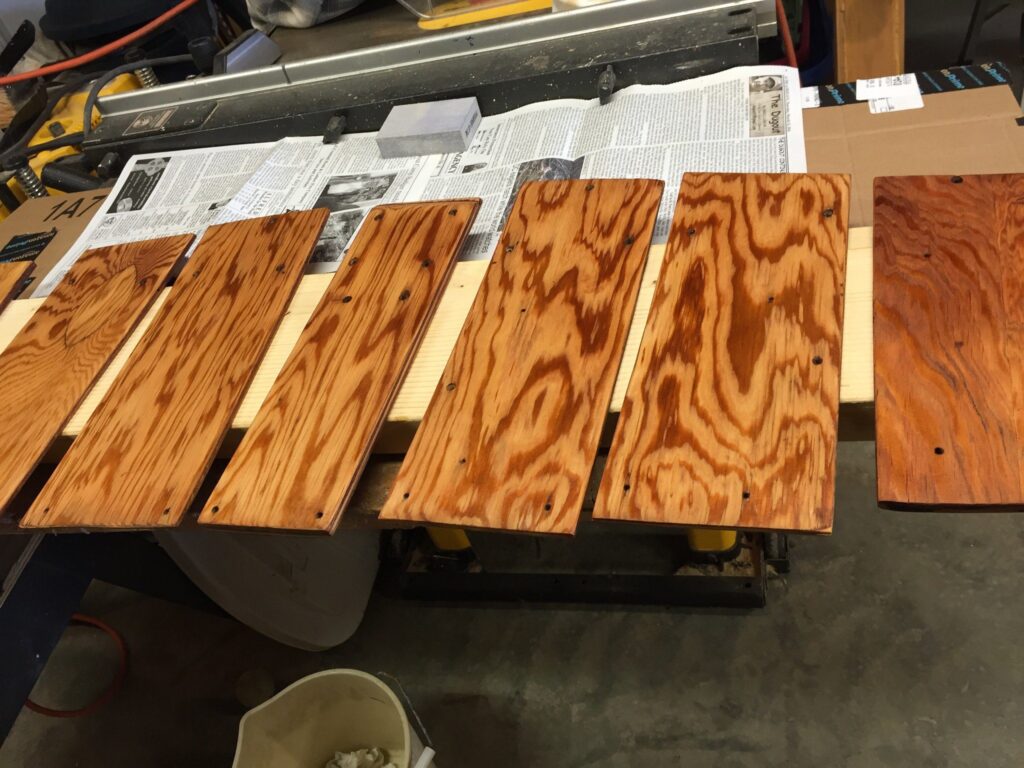
How to Make Plywood Look Good: Techniques to Elevate its Appearance
Before diving into the different methods, it’s important to understand the fundamental properties of plywood. Plywood is made by layering thin sheets of veneer, glued together with the grain of each layer running in alternating directions. This structure gives plywood its signature strength and flexibility, but it can sometimes lead to a less than ideal visual outcome. With the right techniques, you can work around this and make plywood look much more polished and attractive.
1. Sand the Surface Smooth
One of the simplest and most effective ways to improve the look of plywood is by sanding it to achieve a smooth finish. While plywood is generally smooth on its surface, the cheaper grades may have visible imperfections, rough patches, or splinters. Sanding smooths out these areas and prepares the plywood for further treatments like staining, painting, or applying a finish.
Begin by using a coarse-grit sandpaper to remove rough patches. Once the surface is even, switch to finer-grit sandpaper for a smoother feel. Sanding can significantly enhance the texture of plywood, ensuring that the finish you apply afterward is even and attractive. A well-sanded plywood surface not only feels pleasant to the touch but also provides a good base for achieving a polished look. It’s one of the easiest ways to instantly improve the plywood’s appearance.
2. Staining Plywood for a Richer Look
If you want to make plywood more aesthetically pleasing, staining is one of the most popular and effective methods. Stains are designed to enhance the natural color of the wood, bringing out the grain patterns and adding richness and depth. The beauty of staining is that it can help make plywood look more like hardwood, without the hefty price tag.
When staining plywood, consider the type of plywood you are using. Hardwood plywood tends to absorb stain more evenly, while softwood plywood can sometimes absorb the stain unevenly. To combat this, it’s a good idea to apply a wood conditioner before staining. This helps to create a more uniform appearance, especially if you’re using softwood plywood. Once the conditioner is dry, apply your chosen stain color. You can go with light shades to highlight the natural wood’s beauty or choose darker shades to give the plywood a more luxurious look.
The key here is patience — allow each layer of stain to dry fully before adding another coat. This will help you build a deeper color while avoiding streaks or blotches. The result is plywood that looks sophisticated and can easily pass for a much more expensive material.
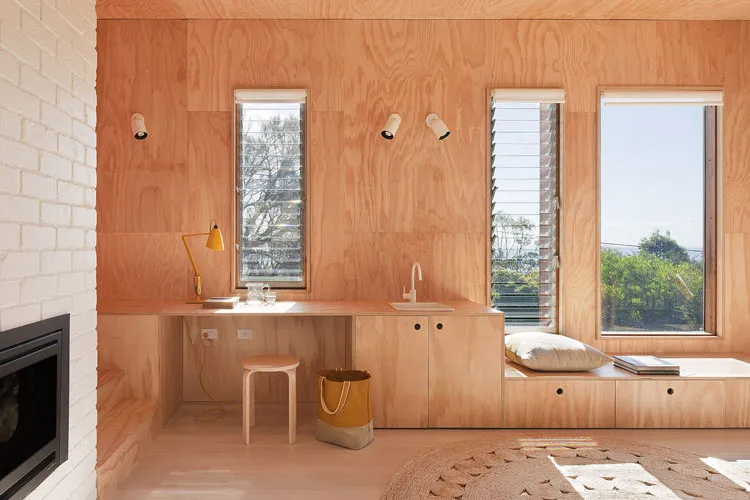
3. Applying a Clear Finish for Extra Shine
After sanding and staining, the next step to make plywood look good is to seal it with a clear finish. A clear finish, such as polyurethane, lacquer, or varnish, is essential for protecting the plywood from moisture, wear, and environmental damage. It also enhances the color and texture of the wood, making the plywood appear more refined.
Polyurethane is a popular option because it provides a durable finish that is resistant to scratches and stains. It’s particularly well-suited for high-traffic areas like furniture or cabinetry. If you’re looking for a high-gloss, mirror-like finish, lacquer is a great choice, giving plywood a sleek, polished look. For a more natural, matte appearance, varnish works wonders, providing subtle depth while retaining the raw beauty of the wood.
When applying a clear finish, use a brush or cloth designed for smooth, even coats. It’s crucial to apply multiple layers, allowing each to dry before adding the next. This helps build up the protection and shine, ensuring that the finish lasts for years and keeps your plywood looking fresh.
4. Painting Plywood for a Bold Statement
Sometimes, you want to make plywood look good by completely transforming its appearance with paint. Plywood’s versatility makes it an excellent base for painted surfaces, allowing you to create a completely different look. Painting can help you achieve a sleek, modern finish or a more playful, colorful aesthetic — whatever fits the project you’re working on.
Before painting, it’s important to prime the plywood. Primer helps the paint adhere better and prevents it from soaking into the plywood too much, which could result in an uneven finish. After the primer dries, you can apply your paint in two or more coats, depending on the desired coverage. You can choose from a wide range of paint finishes, such as matte, satin, or high-gloss, depending on the overall look you’re trying to achieve.
In addition, painting plywood can mask imperfections, which makes it a great option if your plywood has knots or other blemishes you’d like to hide. Whether you’re creating a bold statement piece or a minimalist design, paint allows for a total transformation of plywood’s appearance.
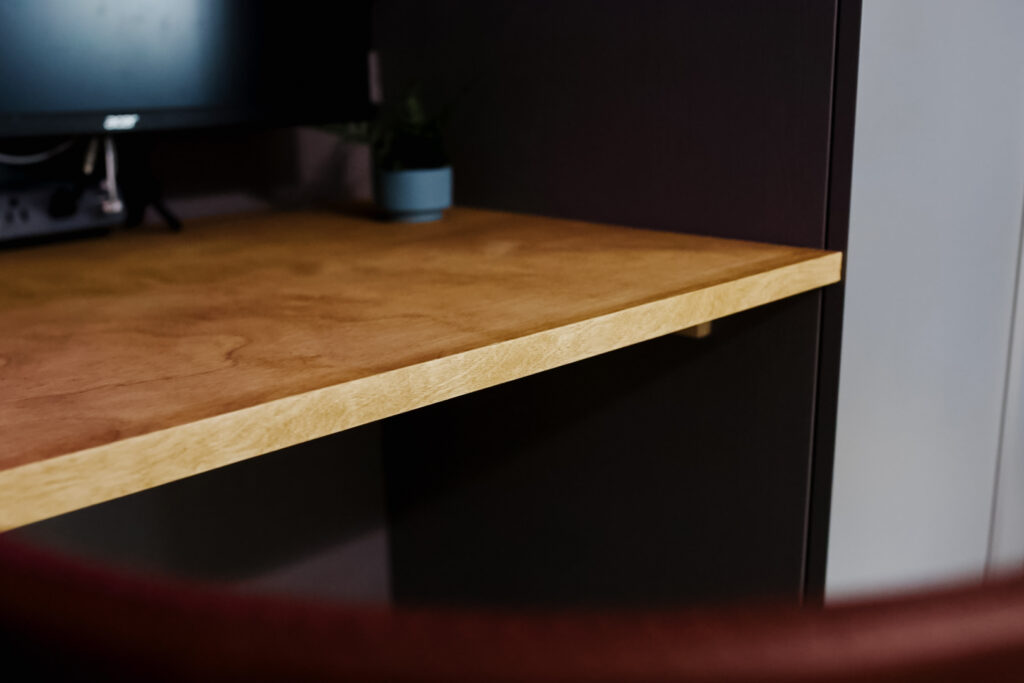
5. Edge Banding for a Sleek Finish
Plywood’s raw edges are often one of the most noticeable aspects of the material. These edges can sometimes appear rough or unfinished, making plywood look more like a building material than a design element. Fortunately, edge banding provides an easy solution to this problem.
Edge banding is a thin strip of material that can be applied to the edges of plywood to hide the exposed layers. It can be made of wood veneer, plastic, or even metal, allowing you to choose the material that best fits your project’s style. Applying edge banding is simple; just apply glue to the edges, press the banding in place, and trim the excess.
This technique is especially useful for furniture projects where clean, finished edges are a must. It helps plywood look more polished and professional, adding a clean, crisp look to your furniture or decor.
6. How to Make Plywood Visually Appealing with Decorative Finishes
For those looking to make plywood look truly unique, there are several creative ways to enhance its appearance. Decorative finishes such as distressing, faux painting, or wood-burning techniques can add texture and personality to your plywood project.
- Distressing: This technique involves intentionally aging the surface of the plywood to create a weathered, rustic appearance. You can distress plywood by using a hammer or wire brush to create dings and scratches, or by applying stains and glazes to give it an antique look.
- Faux Finishes: Faux painting can mimic expensive materials like marble, stone, or even metal. A faux finish adds a touch of luxury and creativity to plywood, making it perfect for unique furniture or decor.
- Wood-Burning: Also known as pyrography, wood-burning is a technique where you use a heated tool to burn designs or patterns into the surface of the plywood. This adds an artistic flair and creates a one-of-a-kind finish.
These decorative techniques take some practice, but they can transform plywood into something highly decorative and visually appealing, especially for statement pieces.
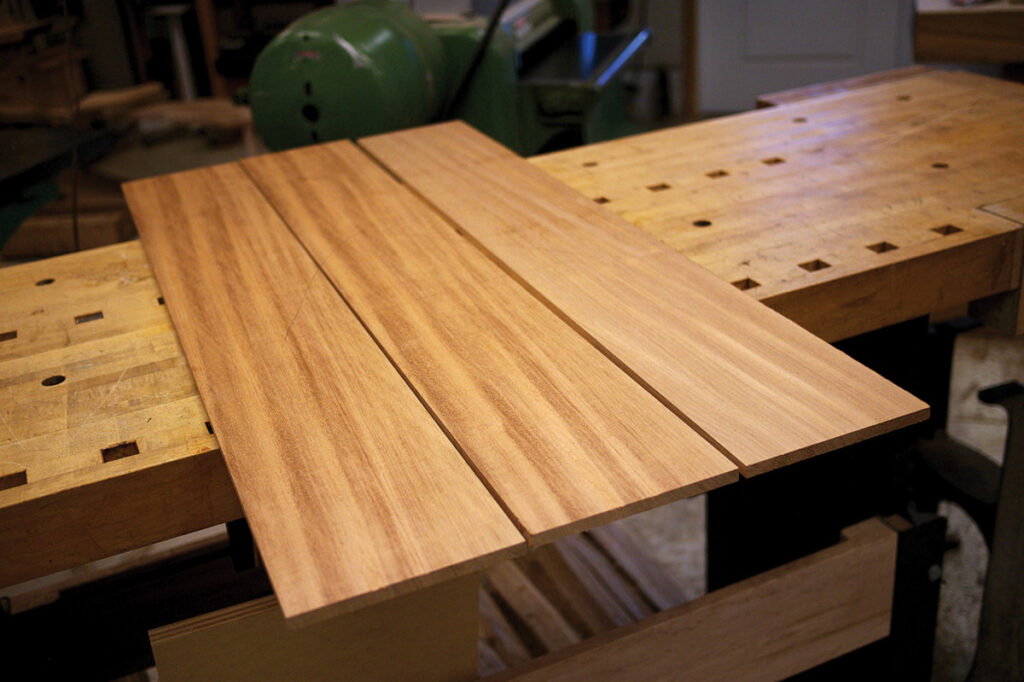
How to Make Plywood Look Good for Specific Uses
While plywood’s versatility allows it to be used in a variety of ways, the approach to making it look good will depend on the type of project. Here’s a guide to making plywood shine in different settings:
1. Plywood Furniture
Plywood is an excellent material for crafting furniture. Whether you’re building a table, bookshelf, or cabinet, the surface of the plywood can be refined to match the desired aesthetic. Staining and applying a clear finish is the most common way to make plywood look like high-end furniture. You can also opt for a coat of paint to give your furniture a bold or modern feel.
Adding hardware, such as knobs, handles, and legs, can further elevate the appearance of plywood furniture. When combined with edge banding, you can create a truly professional, high-end look without breaking the bank.
2. Plywood Wall Panels
Plywood wall panels are becoming increasingly popular in modern home decor. To make plywood look good as a wall covering, start by choosing a high-quality plywood that has an even, consistent grain. Once you’ve installed the panels, you can either leave them in their natural state with a clear finish or apply a stain to enhance the wood’s color. For a more dramatic effect, consider painting the panels in bold, modern colors.
3. Plywood Cabinets
Plywood is often used for cabinetry because it’s strong, affordable, and easy to work with. To improve the appearance of plywood cabinets, use stains or paints to match your home’s aesthetic. Adding decorative trim or molding can also help the cabinets appear more custom and polished.
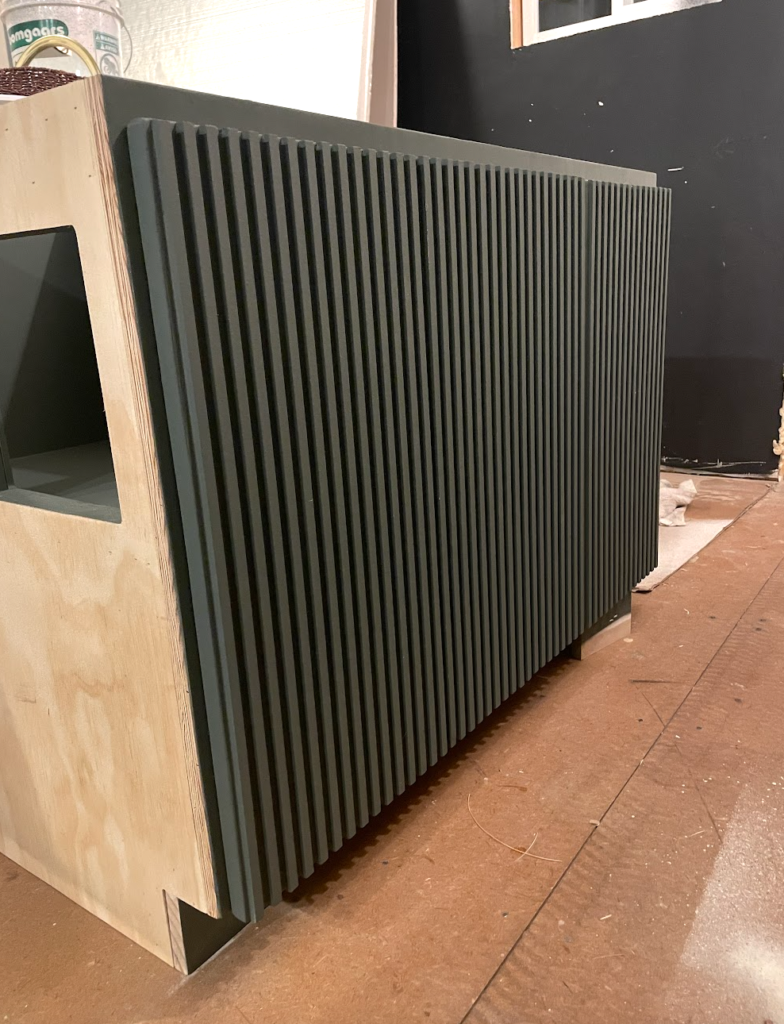
How to Give Plywood a Better Finish for Longevity
After you’ve made your plywood look good, it’s crucial to protect it to maintain its beauty over time. Applying the right finish, such as polyurethane, helps seal the wood, preventing damage from moisture, dirt, and scratches. Regular maintenance will also ensure your plywood projects look good for years to come. Simply wipe down surfaces regularly and reapply a fresh layer of finish when needed.
Wrapping Up: Transforming Plywood into a Beautiful Material
Plywood might not have the glamorous reputation of solid wood, but with the right techniques, it can easily be made to look good. Whether through sanding, staining, painting, or adding decorative finishes, plywood can become a refined and beautiful material. By following these tips, you’ll be able to make plywood not just functional, but a stunning addition to any project, from furniture to wall panels and beyond.